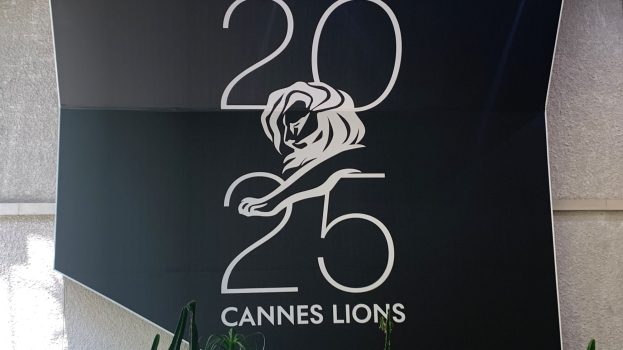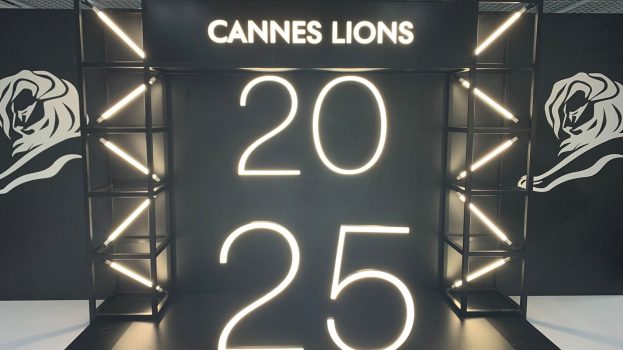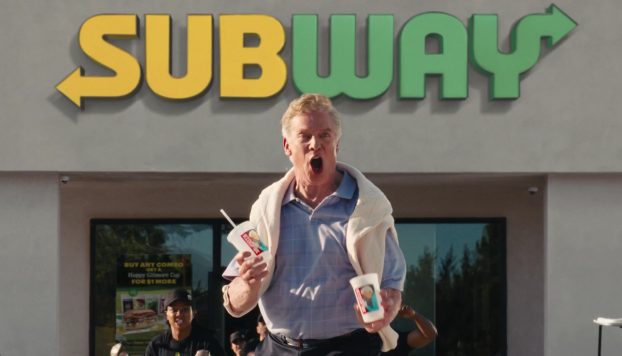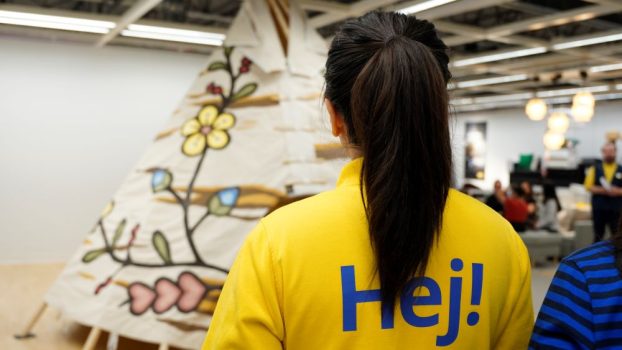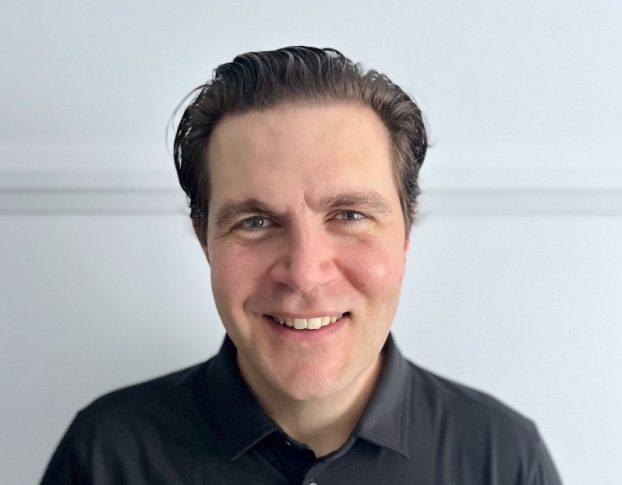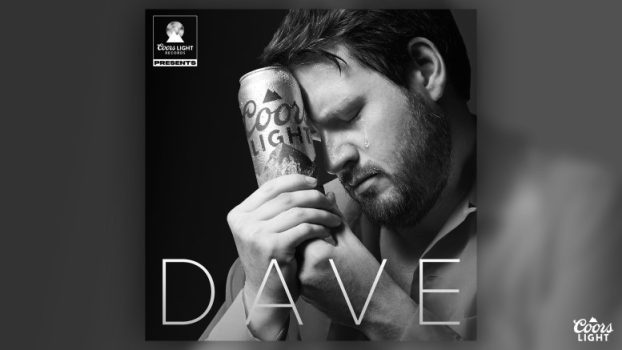Canadians are known for our politeness, but our strongest virtue might actually be loyalty. A 2009 study by research firm Colloquy
found that 93.6% of Canadians belong to at least one loyalty program. The average Canadian household is active in 9.2 programs, compared to 6.2 in the U.S. This year, we’ve seen programs launched by Metro, Virgin Mobile, Walmart Canada and HMV Canada, with Canadian Tire planning a new one for 2011. And relative newbie Scene was just named a double finalist in Colloquy’s North American Loyalty Awards. Why is Canada such fertile ground for loyalty? And how are advancements in technology and social media changing the landscape?
PANELISTS
Andrew Bridge, director of brand and communications, Virgin Mobile
Shawn Bloom, GM, SceneTed Boyd, owner/CEO
Ted Boyd, owner/CEO, 58Ninety
Ken Wong, Queen’s University marketing prof;VP knowledge development, Level 5
Jennifer Hawkins, VP/GM credit card portfolio, American Express Canada
Bryan Pearson, president/CEO, LoyaltyOne and Air Miles Reward program
Stephen Brown, president, Fuse Marketing
MODERATOR
Joan McArthur, principal and founder, Joan McArthur Training
Joan McArthur: Let’s start right at the ground floor: what is the primary reason so many marketers get into this space?
Shawn Bloom: It’s about capturing customer data and understanding customer behaviour, using that to make better decisions that help you drive sales and increase profits.
McArthur: Interesting that you would say that first. As opposed to creating a relationship, you say data. We know how important that’s become.
Bryan Pearson: We’re all in it for the same reason, which is to cement those customer relationships. The issue is that you need a mechanism or some way to build that relationship. In today’s world, tech has provided a means for us to recreate some of the ways that companies eons ago created loyalty – by beginning to understand customers.
Ken Wong: I may be a little crasser: it’s about money. It’s lift, shift and retention; it’s bigger share of wallet, lower cost of serving the act. The analytics are critical, but it’s a means to an end.
Jennifer Hawkins: Consumers are savvier these days; they understand they can earn more miles or points on their everyday spending. We’ve moved away from just earning miles for all those distance trips to my gas, my grocery and my restaurant purchases.
Stephen Brown: I’ve been in focus groups where I’ve had customers teach me things about the program I’m working on, and how to accelerate points. I’m at the point where I’m taking notes.
McArthur: So why has Canada been such an ideal model? Why have loyalty programs been so successful here?
Pearson: I think what’s different in Canada is [it] started with a value proposition that was not cash-based; it was based on travel and things that added dimension to people’s lives. With Air Miles getting a foothold as one of the early programs, it was mass consumer, it established a system in the Canadian mindset of what value meant. The programs that came up afterwards all built on that. There was a time when the U.K. market was probably the most developed loyalty market in the world. I would argue today that the companies executing loyalty on the Canadian landscape have more robust programs than any other geography. Because it’s not purely cash, it’s the way people are using it to add to the marketing mix, to the value proposition that goes out. What we found when we looked globally is that the foundations of consumer loyalty are rooted in the same effective elements. I call it the three Rs of loyalty: reward, recognition and what’s really emerging now is relevance.
Wong: I find it significant that you started with frequent flyer programs, because loyalty goes all the way back to trading stamps. At that time it was pure reward, there were no analytics, there was no extended offer. I think Canadian firms have done a much better job using the data to improve the quality of offers to consumers.
Pearson: Reward is, “what’s the tangible value I’m taking out of it?”; recognition is what we call soft benefits, it’s the special lines, the lounge access, it’s the things you get because of status. It’s harder in a retail operation to do that, but there are retail opportunities that come from mining the data and really understanding the dimension of your customer. What I see in this economy is channels for access to consumers are fragmenting, the consumer gets tens of thousands of media and marketing messages a day – where we’re underdeveloped still is this idea of relevance, how you capture the attention economy.
Andrew Bridge: It’s all about cost to acquire vs. cost to retain in the mobile industry. We’ve recently launched a program where our customers are now members and they get benefits. The big opportunity for us is to retain our customers and to get them, when folks are leaving their carrier, to say, “You should go with VM because they treat their members like real people, they reward their members.” It’s so expensive to acquire a customer when you’re giving them a free phone; it’s much more effective to get someone on board that will stay.
We want to be able to offer things to our members that are generally younger, more urban. So we give them special seats at the Lady Gaga concert, or we’ll fill a plane full of members and fly them down to L.A. On top of the table stakes in the industry, phone upgrades and that kind of thing, we want to deliver unique rewards that differentiate us and create talk value. That’s how we see loyalty as a critical element of us driving our business forward.
Hawkins: Amex has been in the loyalty business and the rewards business since the 1990s, so we’ve got our own membership rewards program but we also work with Air Miles and Aeroplan. I think there are different currencies and different reward programs for different kinds of people. For example, we just launched our Costco TrueEarnings program and how you communicate in a warehouse environment is very different than how you would communicate the new Amex Air Miles credit cards. It’s about having the right tone and manner and being in the right place.
Pearson: We operate one of the largest programs in Canada, Air Miles, and [in that capacity] we have two relationships, one is with the consumer, where we have to frame the value proposition, the reward, the communication. The other relationship is with the companies that use the cards, like Amex, to incent their customers, and we’re working with them to provide a channel of communication that is a more motivational currency and ultimately has a better response rate and better ROI than they would have elsewhere. The other side of the business is we actually operate and look at loyalty as a practice. We’re working with major retailers and FIs all over the world to optimize or conceive of new loyalty ideas.
Brown: We come at it differently, and we see a different pendulum of size and scale. For two of our largest clients, one very big bank, one very big retailer, loyalty programs are a part of everything they do. We see it as a real core component of how they’re providing added value, but it’s really about acquisition or increasing basket size. [For] the smaller companies, it’s about that old-school primary concept of what loyalty is, so instead of the model of “buy x and get y,” it’s much more. For the auto company, it’s “how do I stay on your radar for the 3.5 to 6 years [until] you eventually give up this car and buy something else?” So it’s a much different model where the price is different, but the concept is about surprise and delight, small engagements, opportunities.
When loyalty was the buzz in the ’90s, we started the Tetley Circle. It was a lot of older people writing in letters. People were engaged, we would send them stuff all the time. Migrated online, that relationship is about advocates. They get the first taste of everything, they can give us comments. We asked the whole segment to hand out samples for Halloween, to give moms a treat when they were taking their kids around. And for around $7,000 we got 65,000 samples put into market because moms who are addicted to the herbal teas said, “Yes, I’ll hand out 50 boxes to my neighbours.” And that’s the loyalty program, because they’ll engage with us in an ongoing relationship. It’s not what I would call pure social media, but it’s definitely a pure communication structure.
Ted Boyd: It’s revolutionary that advocacy could at times replace a consumption metric in terms of value back to the brand. That is a unique thing that only came to pass in the last three to five years: unstructured conversation occurring and all of us realizing that, wait a minute, if we tie those conversations back to someone in our database there’s something going on here that is much more powerful than just a purchase.
McArthur: Shawn, tell us about Scene’s mission.
Bloom: Scene is a joint venture between Cineplex and Scotiabank, and is actually an organization unto itself, set up to run the loyalty program for both. You couldn’t have two more different founding partners, an entertainment company and a bank, but it’s been a really great partnership.
For Cineplex, it was really about understanding their customers. Prior to Scene, they knew they had 63 million people coming through the theatres each year, but they didn’t really have any insight into who those customers were.
For Scotiabank, the primary objective was about the youth market; they wanted a way to appeal to the 18- to 45-year-olds and give them a reason to think about Scotiabank.
It’s surpassed everybody’s expectations in terms of growth, we’re approaching 2.5 million members in just under three years, and the enrolments are continuing at the same pace: every week we get 15,000 new accounts.
McArthur: This whole field is so rich for innovation, as tech starts to exponentially grow. What’s happening with social media?
Boyd: In terms of CRM, the basic premise of a loyalty program is: I do something, and typically that involves a purchase, and I’m going to get a reward. Social CRM is a combination of that and trying to quantify talking about a product or service.
If you think about sports marketing,
a Blue Jays season ticket holder at $14 a seat times 81 games divided by however many games are at home, not a huge economic value. But somebody out in a chat room, they activate hundreds, if not thousands, of people around a point of
view, so their value to the organization might be 10 times what a season’s ticket holder might be.
There’s an entire series of metrics emerging that I would argue have been undervalued because we haven’t been able to quantify the value of conversation. With the rise of social and influenced media, and tracking methodologies like Radian6 or Truecast or others, we’re able to tag those individuals in a database, tie them to a data profile, start to evaluate that and maybe reward them or treat them differently than somebody who’s a very high consumption target.
Pearson: We launched a social media area within our website, and ultimately what we’ve been able to do is track who’s coming in, who’s engaging in dialogue, how long they’re spending in that environment, and we’ve found that there’s dramatic improvement in their actual behaviour with the program after spending time there.
We all used to do recognition events of some form or another. I think the neat thing about social media is it’s given a voice and reach to those sorts of events. So before, if you recognized a customer, they told everybody in their circle of friends. Now that voice can be transmitted much more broadly.
Hawkins: We just launched the new Starwood Preferred Guest card from American Express. Starwood collectors are very avid and we knew already that they spend a lot of time online on Firetalk.com, Redflags, etc., so we did a social media audit. We looked at who was leading all the chats and actually took it a step further and invited [a dozen of] them to dinner to talk about what they thought about social media [and] what they knew already about our upcoming card offering. We gave them the inside scoop and then over the subsequent couple of weeks, had a dialogue with them online, so when we launched they were the first ones to apply, they talked about it in their communities and on their blogs.
We had the bloggers tweeting during the dinner [and saying] these are all the new things I can tell you about the Starwood Preferred Guest card. Yes, there’s sometimes going to be misinformation but what we find is that people actually correct each other.
Wong: I come at it a little bit different, of course. As a prof I’m supposed to be teaching the stuff. IBM did a study a couple of years ago, and less than 20% of all firms put together an ROI business case to back up their loyalty programs. Less than 10% aligned the organization. Talk about social media – they never connect the rest of their organization or staff to what’s going on in the program. We can be as relevant as hell to the consumer, but if our staff don’t understand what that point of relevance is, they can’t deliver the value appropriately.
We tend to sell loyalty programs on the basis of generic statistics, as opposed to specific business cases. Everybody knows [it costs] six to eight times more money to acquire a new account than it does to service and retain an existing account, everybody’s seen the numbers book The Loyalty Effect about the profit impact of a 1% change in loyalty, so we buy into those and we make the leap of faith. But nobody goes back and says, here’s what its worth to you to retain that sale for this number of years, here’s the lift of the share of wallet you can expect, here’s how to re-engineer the relationship with the customer to protect that account.
Bloom: The costs of running a loyalty program are very obvious and easy to measure. It’s harder to measure the ROI, and that takes a commitment on behalf of the organization.
Pearson: I go at it from the other end, which is to say we’re actually held to a higher standard than most things. No one can sit back and say here’s the ROI on my flyer and this square inch of space. The level of diligence that exists is a fraction.
Wong: There’s also a corporate management task here. With other marketing instruments, you spend the money, you expense it this year. With loyalty programs, you invest in servers and technology and you get to amortize that over time, so you make a huge expenditure this year, but it doesn’t necessarily depress your EBITDA or your profitability right away.
Toane: What are the advantages of joining a coalition vs. going it alone?
Brown: What I see on a regular basis for clients who are trying to make that decision is that the coalition does the heavy, very sophisticated lifting for them. Partnering allows you to get the best without the monstrous investment, and the specialty, that brain investment. A lot of companies are very good at marketing or producing something, but when it comes to loyalty it’s not in their strengths. Now, you don’t get the same control, you’re sharing, there are downsides, but the biggest thing for some clients I’ve worked with is that you start running vs. slowly walking.
McArthur: If I partner with Air Miles, then the data I get, you get too, right?
Pearson: That’s a positive end and a consideration in the decision. The data is still yours, it’s just that you’re sharing a component of that with the coalition, and there are data principles that guide how everybody uses that.
Bloom: The advantage of the proprietary program is you have more control over the brand, the communication channels; you own the data, you determine the frequency at which you talk to them and the tone.
Bridge: We did have a lot of discussion about whether we should partner or go at it alone. Our ability to customize and deliver a very niche program were the benefits of developing our own program. The other thing that we do have, however, are very sophisticated systems in the back end of our customer database so we have a lot of info on how our members use our products, we have very sophisticated segmentation models so that we can take that and mine it and use it to develop our offering and to drive those
key behaviours.
Wong: You could hear the same comments about the distinction between a product brand and going under an umbrella corporate brand – the efficiencies, the power and the specialization that comes from it vs. the dedication. It’s not whether or not one is always better, it’s whether or not one is right for you and your brand.
McArthur: There’s a point of view about trying to encourage global brands to use Canada as a test lab. I’m wondering with Air Miles if Canada is proving to be a test model.
Pearson: Canada is the model. We’re constantly experimenting, but I’ve probably hosted pretty well every other major
coalition program on a global basis in our boardroom, other than Aeroplan. I think Canada is an interesting market in the sense that there is such diversity here. I think we can be profound exporters of talent in this space over time. I know a number of people around the table have been in the States and exchanged expertise with their U.S. colleagues, and colleagues from around
the world.
McArthur: Let’s talk about where it’s going to go from here. It seems to me it’s still kind of a frontier, and especially as the technology increases, the opportunities for innovation increase, and the opportunities for offering value to the consumers.
Boyd: For all the analytics that we have, I don’t know how much of that insight really makes it over to the mass marketing side and makes us smarter marketers overall. Maybe the biggest opportunity is to take the silos away and matrix all of that learning over to the other side of the house, where the big dollars are being spent. We can perhaps invest more wisely and build the business overall and also deliver a whole lot more value to our customers.
Pearson: I think we’re in a very exciting time, as loyalty marketers. And it’s less about innovation, it’s about a confluence of trends that is allowing us to get to what we envisioned 15 years ago. Technology and channels of communication have evolved and, lo and behold, the finance dept. has pretty well cut costs from everywhere and they’re turning their attention to the next biggest number on the line, the marketing budget.
For me, the interesting bit is that as people are retiring, the people who are coming up into positions of authority have grown up at least partially in a databased world, so they will view the opportunity differently.
Wong: You’re going to find executive audiences that are much warmer to this than we have seen in the past. We are seeing now the first generation of marketing majors who are not afraid of numbers, not afraid of finance, who really are embracing it.
Pearson: I think the evolution, which is scary from a marketing perspective, is that we’ve always talked about the consumer in aggregate. And yet, despite that, most marketing organizations have really not been about the consumer, it’s about optimizing profitability on some other measure. We’ve come to the point where it’s feasible to have the consumer truly at the centre.
Hawkins: Consumers are feeling more empowered now. They feel much more in control and they know, especially the advocates, that they have some sort of authority and they have influence.
Bridge: That’s why some people are scared to dip their toe deeper into the social media space, because of the ramifications.
McArthur: So are there any demographics that are as yet untapped, do you think, in the loyalty space?
Wong: I think sectors are going to emerge the same way that brand characters are going to change. I was on a panel with Heather [Reisman] and she was asked, how is Indigo going to survive in this world? And she said, well, Indigo is not a bookstore; it’s a store for booklovers. It’s a store that caters to all the things that people who happen to like books also like. They are now one of the nation’s largest specialty toy retailers, because people who buy books have kids. So if you think about it in those terms, maybe I’m not going to have a demographic called “plumbers” or “profs,” we’ll have a demographic called “people who love books” and we’ll have a loyalty program based around that.
Pearson: The yin and yang in what we do is this mass customization: recognizing the cohorts by occupation, by age, by interest [and] finding a way to deliver to [what] may be exactly the same product, but I’m going to talk to the 21-year-old very differently than the 42-year-old. So in my view, the new frontier is really about relevance marketing and taking advantage of the tech that exists and refining it.
McArthur: It seems to me that if you are a company that has your own loyalty program, you need to treat it like a brand.
Bloom: We treat [Scene] as a brand. It’s got its own marketing budget, and we are very protective over the Scene brand. There’s a lot of equity that goes into being associated with Air Miles or Scene or other loyalty programs, so you have to be very careful about how you treat it.
Brown: One that’s impressive is the Shoppers Optimum program. I’ve heard women say, “The bulk of the store is where I get my points, [but] that front hallway with the higher end cosmetics is where I redeem.” I think it’s part of the whole brand that they have, from the name to the way they structure it: a lot of the store is just stuff you need, but the points allow you to get what you want. It used to be you’d save for years and get one trip, and now I’ll be honest, I’m one of those guys, when I get a free movie I’m like, woo-hoo! Maybe it’s connected to our sense of value over the last few years – it’s not the size of the reward that’s important.
McArthur: In really trying to understand the consumer and their shifting environment, it seems like loyalty programs are the sharp edge.
Bridge: Based on what people are redeeming, you can tailor your marketing message and make it more relevant.That’s something that loyalty and level of engagement can help you customize.
Pearson: I have three Vs of loyalty: value is consistent, visibility is number two and the third V is voice – if you’ve built the right relationship, you’ve got an email address, you’ve got a mobile phone number, to create dialogue. To that extent, I would agree with you that we can be the thin edge: one, to understand what the dynamics are and then two, to quickly identify what’s happening underneath and be able to act very quickly through a targeted, one-to-one channel.
We asked the folks at Corus’s Her Report to help us out with some fresh intel on Canada’s love affair with loyalty. Jump to Loyalty by the Numbers to see what they said.


